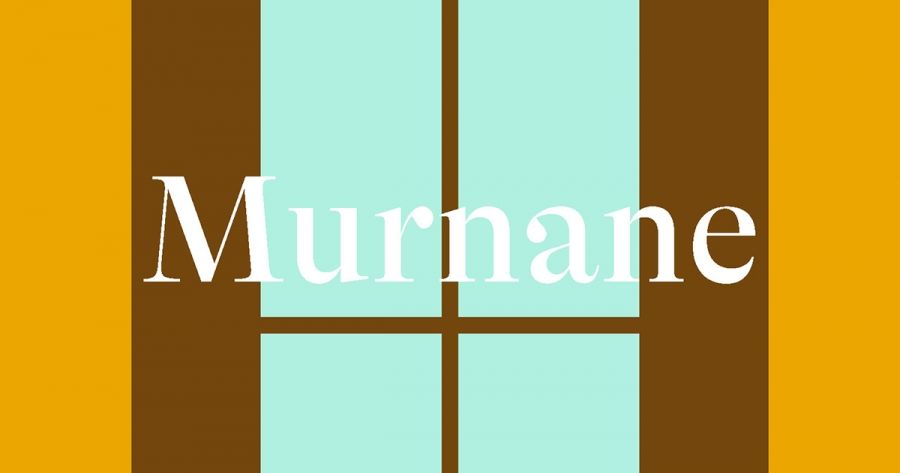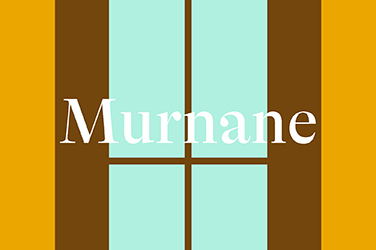
- Free Article: No
- Contents Category: Literary Studies
- Review Article: Yes
- Article Title: Late fictions
- Article Subtitle: Gerald Murnane’s retrospective intention
- Online Only: No
- Custom Highlight Text:
Emmett Stinson’s brief critical survey centres on Gerald Murnane’s four major ‘late fictions’, beginning with Barley Patch (Giramondo, 2009) and ending with Border Districts (Giramondo, 2017). It is a timely and illuminating companion to Murnane’s recent fiction and works well as an extension of the first monograph on his work, Imre Salusinszky’s Gerald Murnane (Oxford University Press, 1993). Although the two books have different points of focus, they are slim yet substantial studies, each dealing with a distinct period of Murnane’s literary career, and both are eminently readable.
- Featured Image (400px * 250px):

- Alt Tag (Featured Image): Shannon Burns reviews 'Murnane' by Emmett Stinson
- Book 1 Title: Murnane
- Book 1 Biblio: The Miegunyah Press, $30 pb, 144 pp
- Book 1 Cover Small (400 x 600):

- Book 1 Cover (800 x 1200):

Alongside that primary focus, Stinson offers a general analysis that highlights important but neglected aspects of Murnane’s fiction. He draws from decades of Murnane scholarship with discernment and lays the groundwork for potential new areas of analysis. Thematically, he emphasises the role of care-giving and domestic responsibility, and the centrality of loneliness (Murnane prefers ‘lonesomeness’) and emotional anguish in Murnane’s work. Formally, he connects Murnane’s writing to the genre of ‘autofiction’ and emphasises its hybridising tendencies.
The chapter on A History of Books focuses on the formal and thematic significance of secrecy, withholding, omission, or apophasis. The thrust of Stinson’s argument is that Murnane is at his most autobiographically revealing when his fiction is at its most indirect or secretive. Stinson argues, brilliantly, that the novella ‘obliquely employs books as a mechanism by which both Murnane and his readers can distantly view traumatic events’.
Stinson also draws attention to his subject’s preference for ‘paraliterary reading practices’ that resist the norms of academic literary criticism. This kind of ‘bad reading’ permits readers to speculate wildly about the world of a fiction, to imagine themselves into some aspect of it or explore its hidden territories, to fall in love with characters and conduct imagined courtships, or to obsess over incidental details and convert them into major concerns. Because Murnane favours this kind of reading and is openly hostile to institutional literary criticism, critics like Stinson occupy an awkward position. ‘As a critic of Murnane’s work,’ he writes, ‘I have never doubted my place.’
Stinson capably addresses a few longstanding queries and critiques of Murnane’s work in his concluding chapter. His analysis of the perceived problem around gender representation is strong and concludes with an assertion that has wider implications: ‘Murnane’s artistic project seeks to represent, in great detail, his specific perspective on the world, rather than to represent a diversity of voices or imagined perspectives.’ Readers may be seduced or repelled by that self-imposed limitation, but it is important to recognise its origin. Stinson correctly observes:
The problem, if that’s what it is, is that Murnane’s writing contains no viewpoint characters who are not Gerald Murnane. This would be a limitation for a novelist, but if we view Murnane, instead, as primarily an autobiographical writer, then the question of viewpoint characters seems both determined by and consistent with his genre.
The decision to focus on the late fiction has much to do with Stinson’s main argument, but it also accords with recent developments in the reception of Murnane’s work and his new status as an international writer. In an interview at the end of Murnane, the author wryly observes: ‘I have written many better books than Border Districts, which won the Prime Minister’s Literary Award for Fiction after the Americans had discovered me.’ The late books helped stimulate a remarkable reputational shift, led by international enthusiasm, to such a degree that even a comparatively minor novel could win a major Australian literary award when his earlier masterpieces failed to make the shortlists. After detailing the mixed reception of Murnane’s work in Australia, Stinson suggests that Murnane is now an author for whom local opinion is, ‘if not entirely irrelevant, then certainly less significant’ because ‘his reputation will be made globally’.
Murnane’s fiction tends to induce strong reactions for and against. While Murnane is an admiring study, Stinson is not unaware of his subject’s limited appeal. The work inspires mixed reactions for obvious reasons. Murnane’s fiction is inward-looking and focuses on seemingly infinite nested landscapes and fantasy objects that stimulate deep but enigmatic feeling in its narrator–observers. This captivates and astonishes some readers, while others see it as a fruitless or confoundingly eccentric mode of writing. Stinson notes that ‘Murnane’s work takes imaginary realms very seriously’. This is an understatement. To fully appreciate his fiction, readers must accept that inner events and inner landscapes are vital and substantial in themselves, no matter how disconnected they are from the visible world or a shared reality. Some readers also struggle with its self-referential tendencies. Stinson writes: ‘possibly no other author’s body of literary work is so rigorously and relentlessly autoreferential, recycling and repurposing its own content across books in slightly altered forms’.
Nevertheless, Stinson concludes with a bold claim for the quality and importance of Murnane’s oeuvre:
He is without question both the most original and most significant Australian author of the last fifty years, and the best writer Australia has produced since Christina Stead. This claim will be hotly contested by many – and perhaps most – Australian critics and readers, but I suspect it will become a commonplace sentiment internationally.
Time will tell if Stinson is right.


Comments powered by CComment